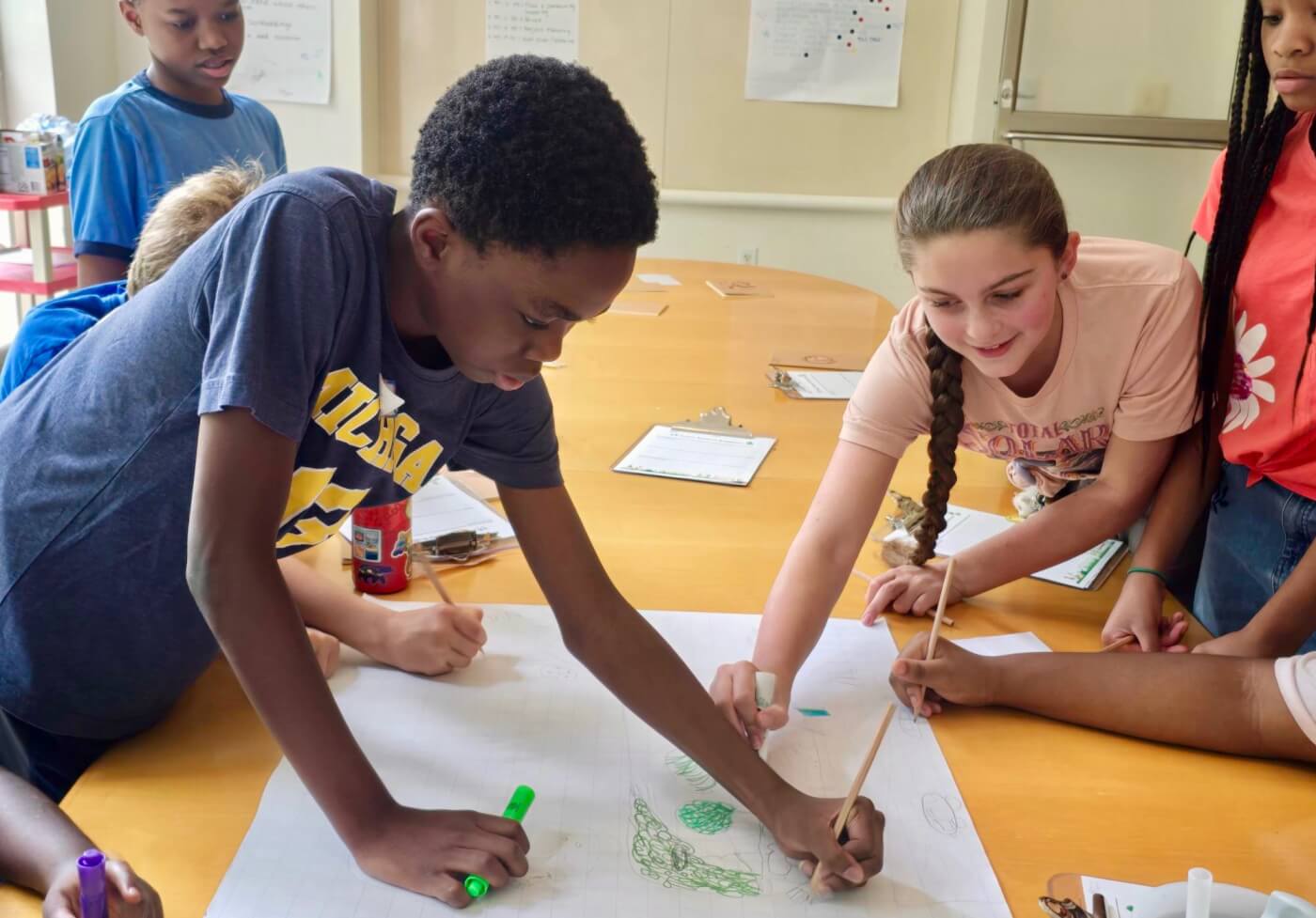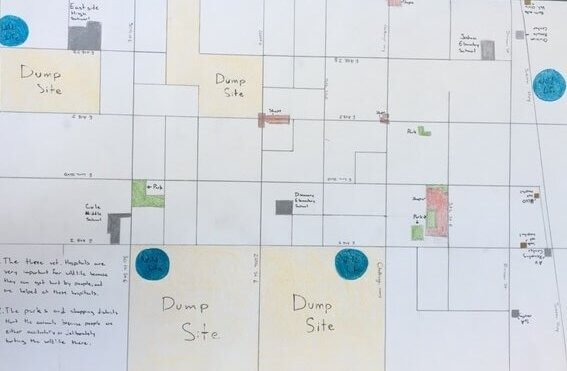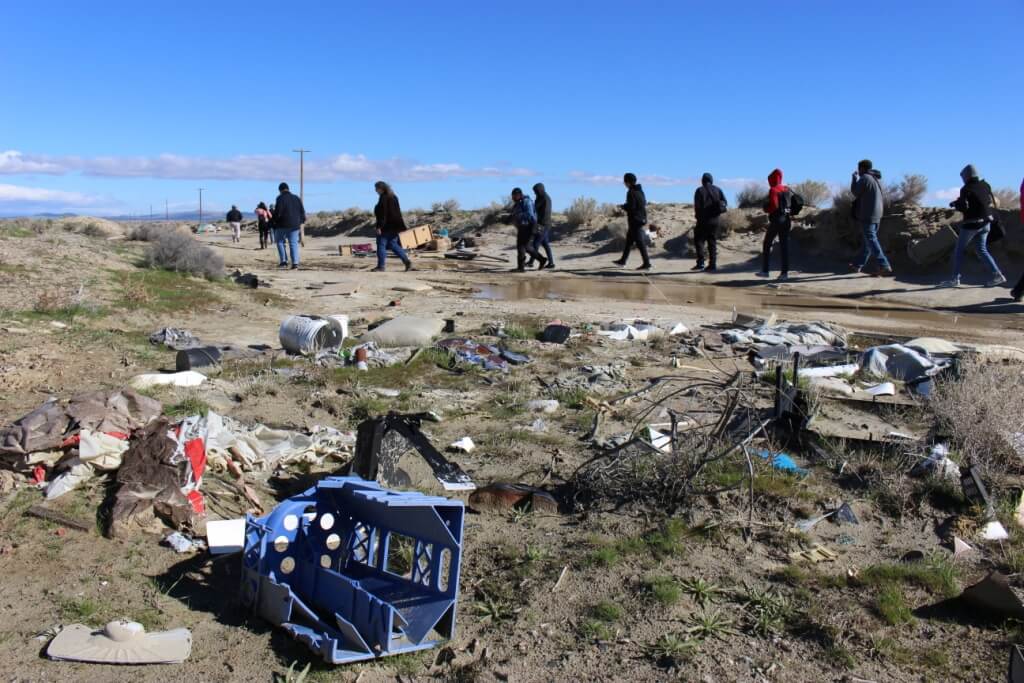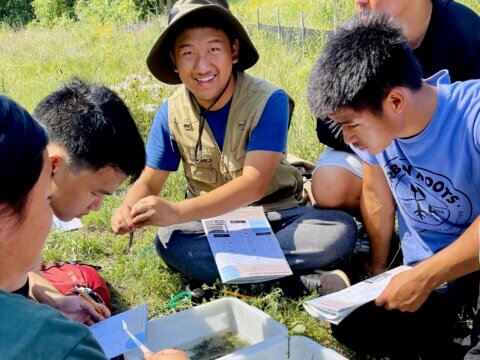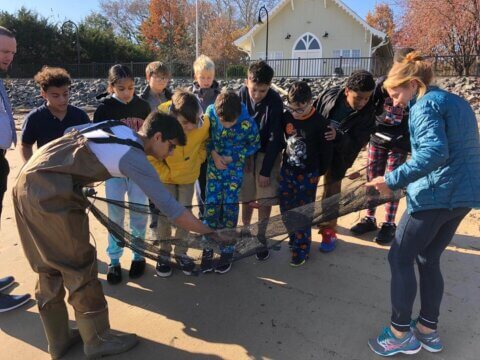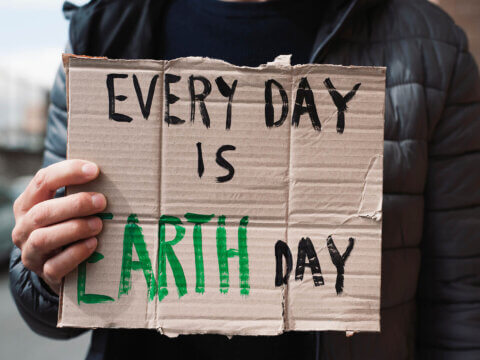Jane Goodall’s Roots & Shoots: Young changemakers and the power of community mapping
Over 30 years ago, a group of youth gathered on Dr. Jane Goodall’s porch in Tanzania. They told her they could see issues in their community, but felt powerless to fix them — they were losing hope. They asked Dr. Goodall to do something. Her response? No — you do it.
Seeing the enormous capacity of young people to make a difference, Dr. Goodall encouraged them to gather their friends and take action. “Jane pointed out that they knew the problems in their community,” Kathleen Kelly, Roots & Shoots Program Director with the Jane Goodall Institute (JGI), says. “She told them that they could improve things themselves. And that was the start of Roots & Shoots.”
Today, Jane Goodall’s Roots & Shoots continues to inspire young people to take action in their communities and create a better world for people, animals and the environment we all share. The youth program supports the JGI’s larger mission to fulfill Jane Goodall’s vision of community-led conservation, which extends to wildlife and habitat research, restoration and conservation. Roots & Shoots is active in 75 countries and all 50 states in the U.S., including six urban basecamps. There are also Roots & Shoots groups in schools, colleges, libraries and other community-based organizations.
Roots & Shoots is a network, says Kelly. Its chapters, basecamps and groups function independently yet as part of a global movement — united by the program’s mission and approach. “We’re here to offer inspiration, tools and resources, and opportunities to celebrate projects and share stories of change,” she says, “but in truth, Roots & Shoots really takes place in your community.”
At the heart of the program is a four-step methodology that guides youth through a process of exploring their interests and their community, planning and implementing a community action project, and celebrating their work.
A Roots & Shoots group at Cracker Trail Elementary School in Sebring, Florida, plotted black bear sightings in their school community, then created an awareness campaign promoting safety for humans and bears alike. Courtesy of Cracker Trail Elementary.
“By participating in this process, young people are building compassion in their community and creating a positive change in the world,” says Kelly. “They’re also becoming more informed, empathetic and kind humans — and that impact is a big part of Roots & Shoots.”
The first step is to “Get Engaged.” During this phase, youth learn about their own potential to make a difference by studying other changemakers. Many young people are drawn to Roots & Shoots because they’re inspired by Dr. Goodall’s life of advocacy and research. “But it doesn’t have to be Jane,” says Kelly. “It’s your passion and whatever motivates you, so we have lots of stories on our website of people who went from not knowing what to do to taking action — and seeing the results in their community.”
“It’s important to realize that you are doing the same thing that others have done,” adds Kelly. “You can learn and take courage from them.”
The second, or “Observe” step, is all about community mapping — a tool that Jane Goodall Institute (JGI) scientists use on community-led conservation projects all over the world. “If you want to be successful, especially if you are coming from the outside, you can’t just dive into a project,” says Kelly. “You have to work collaboratively with the community to understand what’s important to them and the resources in their environment.”
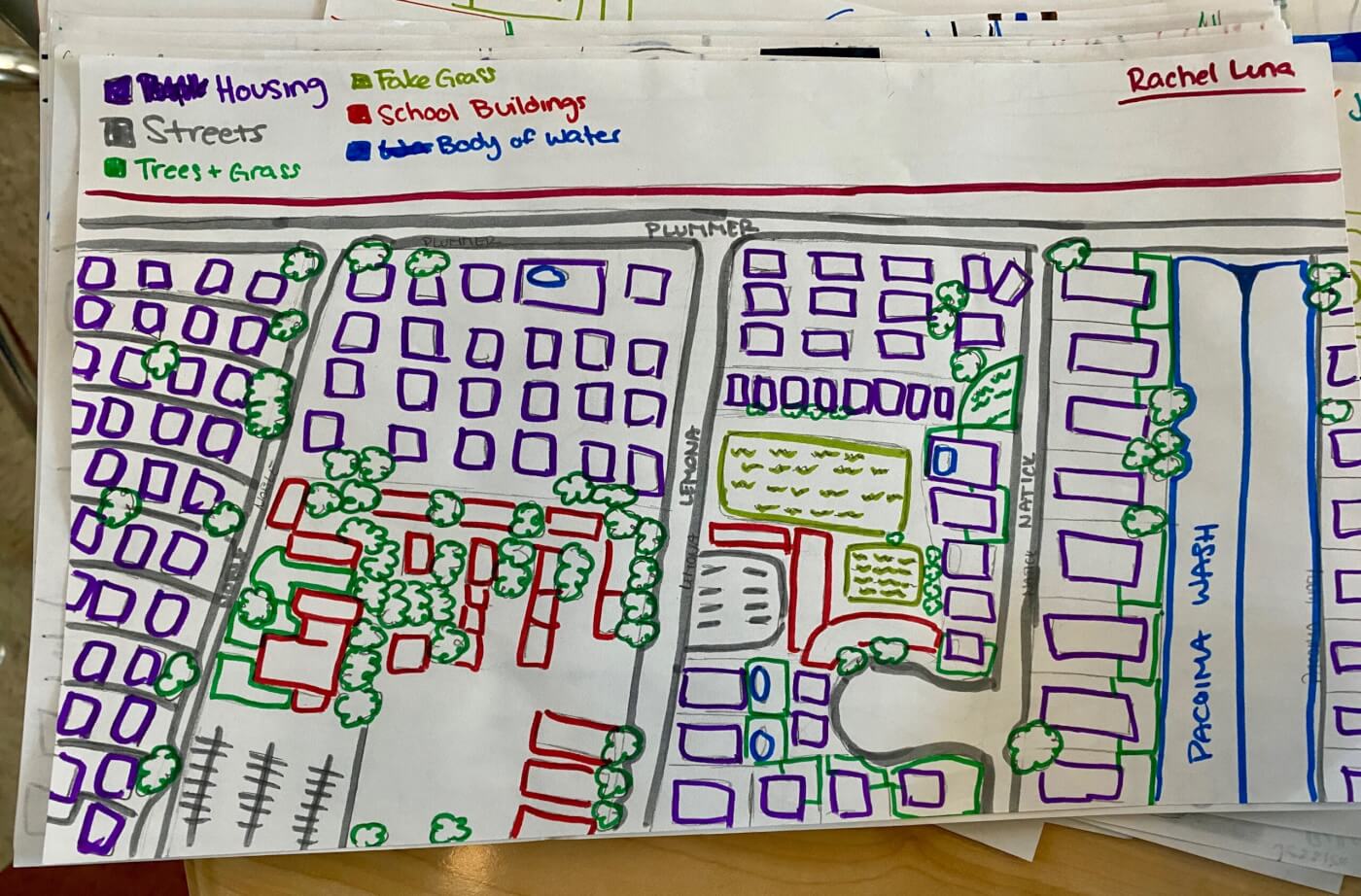
When community mapping revealed a lack of greenspace at Valor Academy High School in North Hills, California, a Roots & Shoots group planted a vegetable garden. Now, students garden, compost cafeteria food waste and harvest veggies as part of their earth science class. Photo courtesy of JGI.
During this step, youth explore their communities through research activities, like taking neighborhood walks and interviewing local leaders. They use maps to record their community’s unique resources: everything from libraries to veggie gardens; homes for animals, like zoos, shelters and wild places; and features that support the environment, like parks and rivers. They also add notes about the issues and resource gaps they notice along the way.
While young people often know a lot about what’s going on in their communities, many have never been asked to share their insights, let alone in map form. “It’s very eye-opening because they can use the map to not only translate what they see on their walk to school but also to connect those experiences to other things on the map,” says Kelly. “With everyone in their group adding to the map, that can be very exciting — a whole new way to uncover collective knowledge they already had!”
“Take Action” is the third step: The young people take something they’ve uncovered in their mapping, something they feel passionate about, and turn it into a community action project. If a project requires supplies, groups can apply for a Roots & Shoots project grant, and many also find partner sponsors in their community.
In the words of Dr. Goodall, “Roots creep underground everywhere and make a firm foundation. Shoots seem very weak, but to reach the light they can break open brick walls. Hundreds and thousands of roots and shoots — hundreds and thousands of young people around the world — can break through these walls.”
The final step for a Roots & Shoots project is to “Celebrate” the group’s accomplishments — a chance to recognize the change-making they’ve done in their community and in themselves.
When we ask Kelly what she hopes young people take from their Roots & Shoots experience, she talks about compassionate leadership, a sense of connection — and an understanding of their role in the world. She quotes Dr. Goodall: “You cannot get through a single day without having an impact on the world around you. What you do makes a difference, and you have to decide what kind of difference you want to make.”
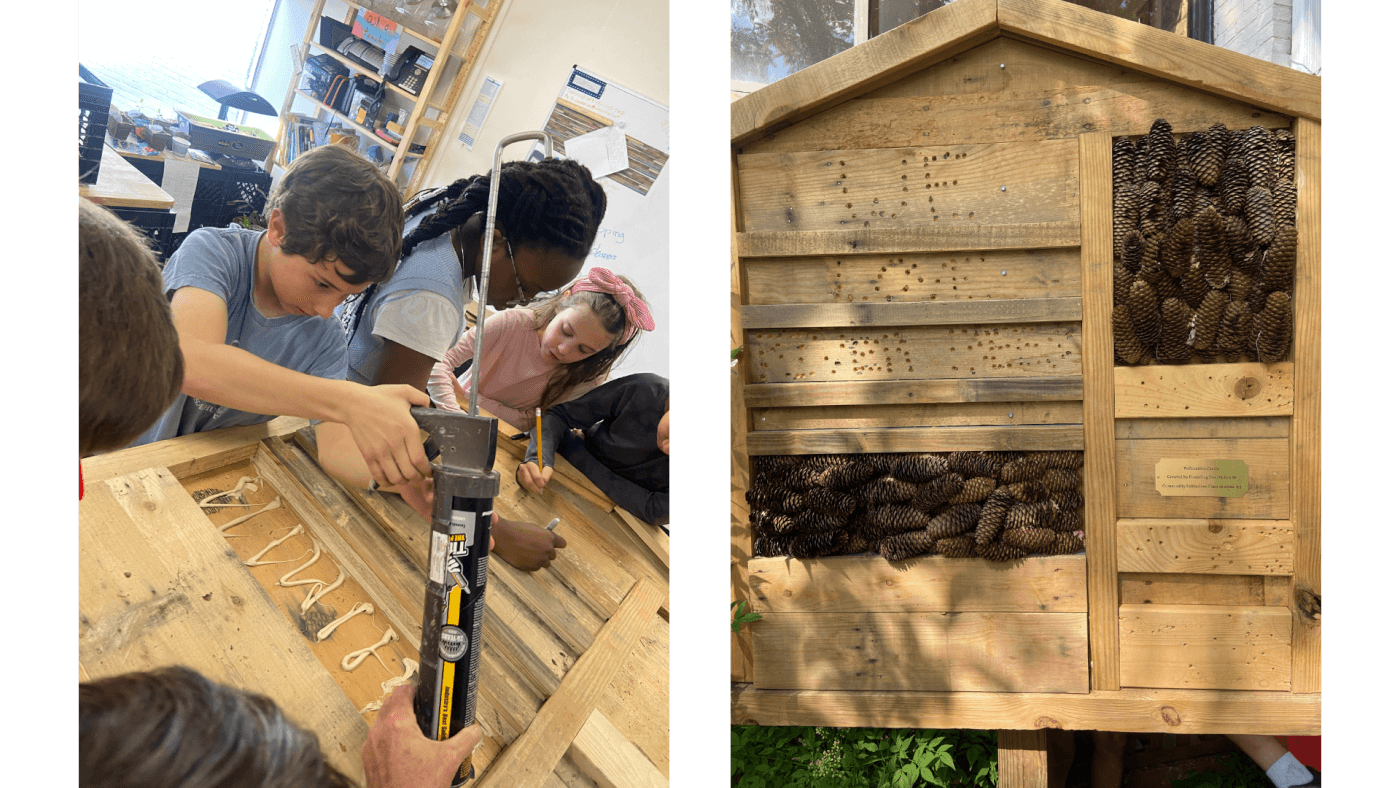
Fourth and fifth graders at River School in Washington, D.C., discovered a decline in the native bee population via community mapping. They worked with a local builder to research, design and build a pollination castle — providing a year-round nesting habitat for the bees. Photo courtesy of JGI.
Over the years, young Roots & Shoots participants have identified nine skills and traits that they associate with compassionate leaders, including introspection, empathy, hope and being a team player who inspires others. As part of the “Celebrate” phase, Roots & Shoots encourages groups to reflect on the compassionate traits and skills they’ve strengthened during their community action projects. As an exercise, it helps them recognize and articulate their achievements.
Posting stories on the Roots & Shoots project page is another way that groups amplify and celebrate their impact. Those posts also become the inspiration for future Roots & Shoots projects. “We don’t curate the stories, and any member of any age can post,” says Kelly. “It’s a place you can point to and say, not only did I achieve this in my community, but I’m able to share it with the world through this global organization — what I did made a difference!”
Groups also celebrate locally. Some groups use their Roots & Shoots grants to make T-shirts for everyone who participated, or to host an event, like a pizza party with an end-of-year slideshow.
In Roots & Shoots, young leaders learn how to use storytelling to inspire action, like these interviews from a Roots & Shoots project in Atlanta, Georgia. Courtesy of JGI/Angelle Cooper.
Part of the power of Roots & Shoots is that youth meet like-minded young people who care about the same things they do. They also connect with experienced activists who are willing to share ideas. Those relationships can inspire youth to stay involved. Some teens and young adults go on to join the Roots & Shoots Youth Council USA, organizing and leading projects in their communities that address everything from bird conservation to seismic safety.
“There is research looking at the impact of Roots & Shoots on young people,” Kelly says. “It shows that by doing these sorts of service projects, young people do build their sense of agency. They do build their sense of empathy, and they do tend to be more active in their community.”
Most of all, Kelly says, she hopes that Roots & Shoots helps youth begin to appreciate that animals and the natural world are a part of their community as surely as all their human friends, family and neighbors. “Recognizing that means that you can understand the world in a more holistic sense,” Kelly says.
“We’re all connected and dependent on each other, so any good we do — or, conversely, anything we don’t take care of — has a ripple effect, impacting people, animals and the environment in a myriad of ways.”
Youth champions: Stories of impact and initiative, a Finding Nature News story
Research Digest: Nature and young people as environmental leaders
Children & Nature Network & Young Leaders
Equity Mapping: Young children & nature, a toolkit
Women’s Herstory Month: Nature connectors and protectors who inspire the children and nature movement, a Finding Nature News story featuring Dr. Jane Goodall
More than 700 leaders working to connect children to the benefits of nature gathered for the 2022 Inside-Out International Conference, a Finding Nature News story featuring Dr. Jane Goodall
-
Network News
POLICY UPDATE: Policy and advocacy for the children and nature movement
-
Voices
Binoculars, bald eagles and my journey as a Black birder
-
Richard Louv
THE WONDER BOWL: Ten Spring and Summer Nature Activities for Kids and Adults
-
Network News
Minneapolis Spotlight: The promise and possibilities of parks for youth
-
Voices
Why nature is my motherhood ally


